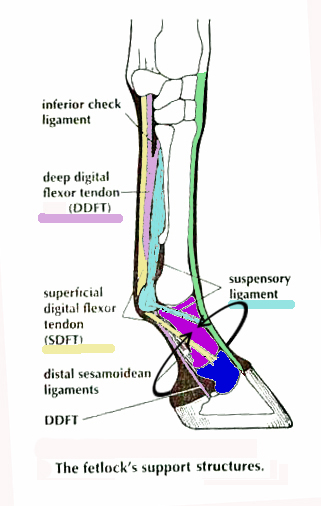Equine Position Release
'Attention' in
legs on the ground
In Equine Positional Release, as in Ortho-Bionomy, the
corrective mechanisms of the body are solicited through
attention to the current pattern. Usually this is
done by identifying the relationship between two structures
while one is stationary and the other is moved about -- very
often one held in the right hand and the other held in the
left and the leg is held up off the ground.
But sometimes a horse is not comfortably able to get a
limb off the ground. (Truthfully, the foot on the ground
may be the one holding the horse up! And it's really
best to leave it on the ground.) (Think about
this. If your foot hurts, which foot do you stand
on? The one that hurts, or the good one?)
And if indeed the foot that stays on the ground is doing
the lion's share of the work, it most likely needs attention
as well. (The other leg needs it, too, yes, so
that weight can be put into that limb.)
In this instance, addressing the foot that won't come
off the ground, it is still possible to solicit the corrective
mechanisms by finding the patterns and then shifting the
weight of the horse onto the foot that's on the
ground.

|
REMINDER: 'Explore
the range of motion' means to move the
bone/tendon/structure imperceptibly! Like,
maybe millimeters!
For example, to address the joint between the
long and short pastern, one would usually hold the
foot off the ground similar to how you'd pick out
the feet and hold the short pastern (in blue) steady
while finding the pattern by exploring the range of
movement (circular arrow) of the long pastern,
(purple) then holding the preferred
position.
This is done for a count of 60
seconds.
If the foot won't come off the ground, the
same thing can be done while the horse is standing
on that foot.
If you can hold the short pastern stationary,
so much the better; however, with the horse's weight
on that limb, it is fairly stationary already, and
you can explore the range of motion through gentle
rotations and then hold in the preferred position. |
For more information about finding patterns and how to
release them, come to one of my Biomechanics
Seminars! The next one is Apr 23, 1-4p, and will
cover "The Head, Eyes, and Neck: Calm awareness" for
both horses and riders. Or have me over for a
private session.
'til next time,
L
Equine Positional Release is the Equine and Equestrian
application of Ortho-Bionomy.
|




![Centered Riding Today: An Informal Talk by Sally Swift [VHS]](http://ecx.images-amazon.com/images/I/41Vn6PfhzML._SL125_.jpg)
![Centered Riding with Sally Swift [VHS]](http://ecx.images-amazon.com/images/I/51OSh9kd9iL._SL125_.jpg)








